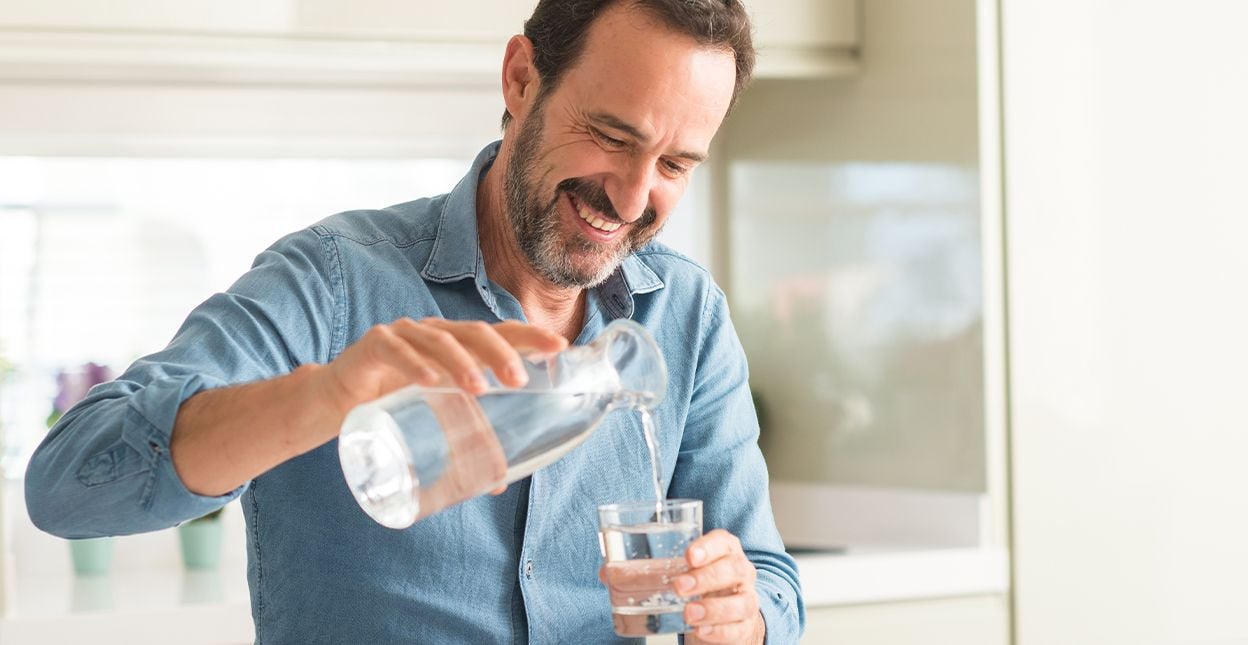Small Bladder
Firstly, let’s clear up the confusion between having a small bladder and an overactive bladder. Anatomically, it’s highly unlikely anyone has a small bladder. Our internal organs don’t tend to differ from one person to the next.
However, it is possible to have a functionally small bladder, which means your bladder, for any number of reasons, can’t hold a lot of urine. Bladder muscles (detrusor) and/or the bladder sphincter muscles become overactive and as a result there is a constant need to urinate.
That’s why when some people say they have a small bladder, what they’re really suggesting is they have an ‘overactive bladder’.
An overactive bladder is a condition resulting from the sudden, involuntary contraction of the muscle in the wall of the bladder.
An overactive bladder causes an uncontrollable and unstoppable urge to pass urine and the frequent need to urinate both during the daytime and night, even though the bladder may only contain a small amount of urine. It is sometimes referred to as small bladder syndrome.
The condition affects around 15% of adults (Urogynaecology.com.au, 2003) (half of which experience urge incontinence), with women affected more frequently than men. The incidence also increases as you get older.
The exact cause of an overactive bladder is a mystery. However, several factors are known to contribute to the involuntary contraction of the bladder muscle, improper bladder function, and other symptoms associated with an overactive bladder.
Some nervous system abnormalities that can cause an overactive bladder include:
- Spinal cord injury
- Stroke
- Parkinson’s disease
- Dementia
- Multiple Sclerosis
Other causes of overactive bladder can include:
- Nerve damage or trauma caused by surgery or certain therapies
- Trauma to the pelvis or abdomen (eg a car accident)
- Urinary Tract Infection
- Bladder stones
- Bladder cancer/tumours
- Enlarged prostate
There are also several risk factors that can increase the chances of an overactive bladder. These include:
- Age — the risk of overactive bladder increases as you age
- Gender — women tend to be more susceptible than men because menstruation, pregnancy and menopause all lead to a rise in oestrogen levels and weaker pelvic floor muscles. For men, an enlarged prostate or damage from prostate surgery can cause an overactive bladder.
- Obesity — increased weight puts additional pressure on the bladder.
- Diabetes — can affect the nerves that control bladder function.
- Pregnancy — causes excess pressure on the bladder.
- Spinal injury — damage to the spinal cord can disrupt signals sent to the bladder, causing involuntary contract of bladder muscles.
Overactive bladder symptoms can include:
- Sudden and overwhelming urge to urinate — This symptom can come on very quickly and without any warning.
- Urge incontinence — This happens when you suddenly leak urine after feeling an urgent and immediate need to go to the toilet. There’s also a feeling of not being able to reach the toilet fast enough.
- Frequency — This is the need to urinate more often than usual — sometimes more than eight times within a 24 hour period. Often the need to urinate is ever-present whether fluid intake is limited or not.
- Nocturia — This occurs when an overactive bladder wakes you to use the toilet several times during the night to the point where your sleep cycle is disrupted.
Your doctor will take into consideration all of the symptoms associated with an overactive bladder. In fact, it may be a good idea to keep a bladder diary to help assess the extent of your condition.
They will also conduct a pelvic exam for women or a prostate exam for men to check for any physical signs that could be the cause.
Additionally, further tests may be ordered so that the right treatment options can be considered and pursued. These tests may include:
- Neurological Exam — This test checks your reflexes and sensory responses.
- Cough Stress Test — This test involves drinking fluids, relaxing and then coughing to see if stress or physical exertion causes urinary incontinence.
- Urinalysis — This tests a sample of your urine for abnormalities like blood, glucose and any bacteria.
- Urodynamic Test — These tests measure the bladder’s ability to empty properly and if the bladder is contracting involuntarily or not.
- Uroflowmetry — This device measures the volume and speed of urination and checks for obstructions like bladder stones
Once tests have been done to determine the cause your overactive bladder, your doctor will suggest a solution that will alleviate your symptoms and minimise any side effects. And while the goal is obviously to find a simple, effective solution, it could be one or a combination of treatments including lifestyle changes, medications and/or surgery.
Lifestyle changes
- Bladder Training and Scheduled Voiding — This method teaches the bladder to steadily hold urine over time, which can help build a tolerance to the urgency that comes with an overactive bladder.
- Double Voiding — This involves urinating twice within a few minutes in between to void any residual urine in the bladder.
- Kegel exercises — These are pelvic exercises to help manage urge incontinence in an overactive bladder by helping strengthen the muscles of the pelvic floor and urinary sphincter.
-
Fluid and Diet Management including:
- Maintaining a schedule of the timing and amount of daily fluid intake
- Limiting caffeine and acidic drinks such as coffee, cranberry and citrus juices
- Limiting alcohol
- Eating foods high in fibre, such as flaxseed, or taking fibre supplements.
- Maintaining a healthy weight and a healthy body mass index (BMI)
- Intermittent Catheterisation — This can be done at home and involves inserting a thin tube into the urethra each time you need to urinate. This procedure is quite invasive, so we recommend you speak with your doctor first to see if this procedure right for you.
Medications for overactive bladder
Some medications have been known to help reduce and alleviate the symptoms associated with an overactive bladder. Because drug treatments present their own set of risks and side effects, they aren’t for everyone, so let your doctor determine which (if any) of these drugs are right for you.
- Anticholinergics
- Antidepressants
- Oestrogen
- Botulinum Toxin Type A (Botox)
Some common complications resulting from overactive bladder may include:
- Disruptive quality of life
- Diminished sexual activity
- Reduced social interaction
- Depression
- Dehydration
- Fatigue (from Nocturia)
- Lower productivity
- Urinary tract infections (UTI),
- Skin irritation and infections,
- Bladder stones,
- Falls and fractures in elderly








